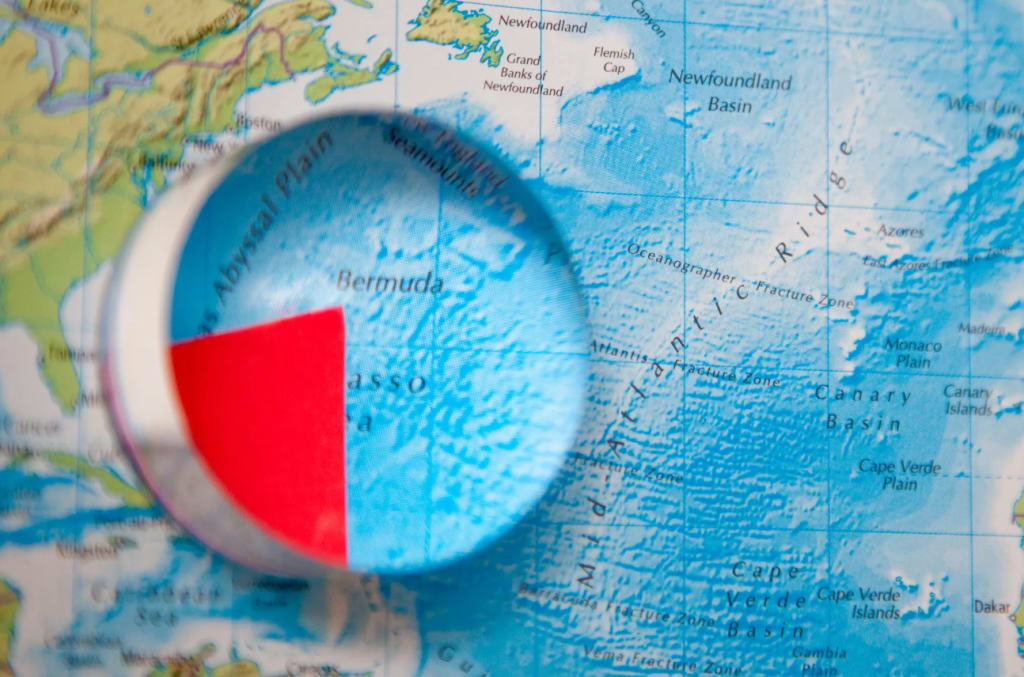The Bermuda Triangle Mystery
The Bermuda Triangle Mystery: Unraveling the Enigma of Vanished Ships and Aircraft

In the annals of maritime and aviation history, few mysteries have captured the imagination and sparked as much speculation as the Bermuda Triangle. Spanning roughly 500,000 square miles between Florida, Puerto Rico, and Bermuda, this area has become synonymous with unexplained disappearances of ships and aircraft. The legend of the Bermuda Triangle gained widespread attention after a series of incidents, including the vanishing of Flight 19 and subsequent rescue aircraft, entered the public consciousness.
Flight 19, a routine training mission of five Avenger torpedo bombers, took off from Naval Air Station Fort Lauderdale in Florida on December 5, 1945. Led by Lieutenant Charles Taylor, a seasoned pilot and World War II veteran, the mission was supposed to last three hours. However, two hours after takeoff, the squadron encountered unexpected compass malfunctions. Both primary and backup compasses failed, leaving Taylor and his crew disoriented in clear but worsening weather conditions.
Communication between Flight 19 and ground control became increasingly frantic as the pilots struggled to determine their position. Taylor, believing they were over the Gulf of Mexico, issued commands for a course correction to the east, aiming to reach Florida. However, some crew members disagreed, believing they were east of Florida and should fly west instead. This confusion was compounded by deteriorating weather conditions and the onset of darkness.
The last known transmission from Flight 19 came at 7:04 PM from Taylor, indicating uncertainty about their location and the situation's gravity. Subsequent search efforts involving aircraft and vessels proved futile, as both Flight 19 and the PBM Mariner sent to find them vanished without a trace. Despite extensive search operations, no wreckage or debris was ever found, intensifying the mystery surrounding their disappearance.
This incident, coupled with other reported vanishings and peculiar phenomena within the Bermuda Triangle, has fueled numerous theories seeking to explain the unexplained. One prominent hypothesis revolves around magnetic anomalies in the area. The Bermuda Triangle lies within an area where true north and magnetic north align, potentially causing compasses to malfunction and pilots to become disoriented. This phenomenon, known as compass variation or declination, has historically posed challenges to navigators.
Another theory points to the region's shallow waters and hidden underwater reefs. The Bahamas, within the Bermuda Triangle, are surrounded by shallow banks and submerged geological formations that may not be visible to ships navigating the area. Historically, these reefs and shoals have caused unsuspecting vessels to run aground or become stranded, especially in adverse weather conditions or during night-time voyages.
Methane hydrates, a naturally occurring substance found in ocean sediments, have also been proposed as a possible explanation for disappearances in the Bermuda Triangle. Methane hydrates can form gas bubbles that reduce water density, potentially causing ships to lose buoyancy and sink rapidly without warning. While this theory remains speculative and lacks direct evidence linking methane eruptions to disappearances, it underscores the area's geological complexity.
The Bermuda Triangle is also notorious for its frequent occurrence of severe weather, including hurricanes and water spouts. The region, intersected by the Gulf Stream, experiences powerful ocean currents and turbulent weather patterns that can pose significant challenges to maritime navigation and aviation. These environmental factors contribute to the area's reputation as a perilous zone for sea and air travel.
Beyond scientific explanations, the Bermuda Triangle has also spawned more sensational theories involving extraterrestrial activity, sea monsters, and paranormal phenomena. Stories of aircraft and ships vanishing without a trace have captured the public's imagination, leading to a proliferation of books, documentaries, and fictionalized accounts that perpetuate its mystique.
Despite the enduring allure of the Bermuda Triangle's mysteries, skeptics and scientific investigations suggest a more rational perspective. The United States Coast Guard and the National Oceanic and Atmospheric Administration (NOAA) have both stated that the number of incidents within the Bermuda Triangle does not exceed those in other similarly trafficked areas of the world's oceans. Statistical analysis reveals that disappearances in the Bermuda Triangle are proportionate to its maritime and aerial traffic volume, debunking the notion of it being a uniquely hazardous region.
The Baader-Meinhof phenomenon, or frequency illusion, offers another perspective on the Bermuda Triangle's mystique. Once a phenomenon captures public attention, people tend to notice and recall similar incidents more readily, leading to a perceived pattern of disappearances. This cognitive bias may contribute to the belief that the Bermuda Triangle is unusually dangerous when compared to other maritime regions.
In conclusion, while the Bermuda Triangle remains an enduring enigma steeped in legend and speculation, scientific scrutiny and rational analysis suggest that its mysteries are not unique. The convergence of magnetic anomalies, shallow waters, severe weather, and cognitive biases may explain many reported incidents within the area. Ultimately, the Bermuda Triangle serves as a compelling reminder of humanity's enduring fascination with the unknown and our propensity to seek explanations for the inexplicable. As maritime and aviation technologies advance, perhaps the secrets of the Bermuda Triangle will be illuminated, shedding light on its storied history and dispelling the myths that surround it.
About the Creator
ava
The future belongs to those who prepare for it today
Enjoyed the story? Support the Creator.
Subscribe for free to receive all their stories in your feed. You could also pledge your support or give them a one-off tip, letting them know you appreciate their work.






Comments (1)
I always found this so so interesting.